Ditapis dengan
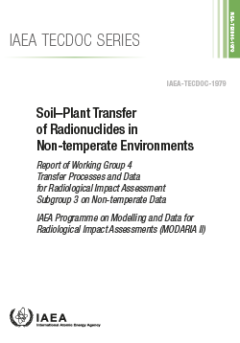
Soil–Plant Transfer of Radionuclides in Non-temperate Environments | IAEA T…
This publication considers radionuclide transfer in tropical and arid environments with a focus on root uptake by crops from soils. The data collected and analysed are relevant for estimating the transfer of radionuclides through food chains to humans and for assessing radiation doses to the public due to intakes of these radionuclides in plant products used as food. The data relate to equilibr…
- Edisi
- -
- ISBN/ISSN
- 978-92-0-129121-9
- Deskripsi Fisik
- 96 hal
- Judul Seri
- Report of Working Group 4 Transfer Processes and Data for Radiological Impact Assessment Subgroup 3 on Non-temperate Data IAEA Programme on Modelling and Data for Radiological Impact Assessments (MODA
- No. Panggil
- -

Certification of Activity Concentration of Radionuclides in IAEA-465 Baltic S…
The accurate and precise determination of radionuclide concentrations in marine samples is an important aspect of marine radioactivity assessment and in the use of radionuclides in studies of oceanographic processes. To support and improve data quality, the IAEA Environment Laboratories (IAEA-EL) in Monaco regularly conduct characterization studies aimed to assign values to reference materi…
- Edisi
- -
- ISBN/ISSN
- -
- Deskripsi Fisik
- 57 hal
- Judul Seri
- -
- No. Panggil
- -

Safety Standards-Safety Requirements Decommisioning of Facilities Using Radio…
The importance of decommissioning has come to the fore in the past few years. Previously the requirements for safety during decommissioning had been considered as part of general waste management, but recently it was decided that this important part of a facility’s life needs to have definitive requirements specified. This publication provides such information.
- Edisi
- -
- ISBN/ISSN
- -
- Deskripsi Fisik
- 25 Hal
- Judul Seri
- -
- No. Panggil
- -
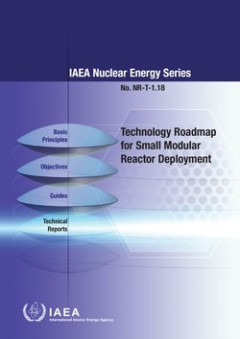
Technology Roadmap for Small Modular Reactor Deployment: IAEA Nuclear Energy …
Given the increasing interest of Member States in the near term deployment of SMRs, this publication presents several model technology roadmaps that States can adapt for their specific projects. For nuclear newcomer countries, these roadmaps assume that a Member State has already developed, or is at least well along the way to developing, the infrastructure necessary to carry out a nuclear powe…
- Edisi
- 2021
- ISBN/ISSN
- 978-92-0-110121-1
- Deskripsi Fisik
- 124 p
- Judul Seri
- -
- No. Panggil
- 621.039.5 IAE t
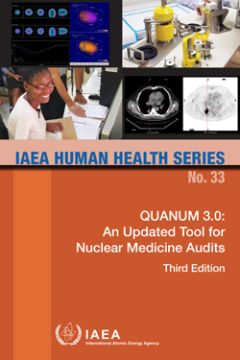
QUANUM 3.0: An Updated Tool for Nuclear Medicine Audits Third Edition | IAEA …
The present publication defines an updated methodology and tools for comprehensive auditing, including all aspects of nuclear medicine. Adopting these guidelines will allow an NMS to demonstrate the level of efficiency, quality, safety and reliability in delivering clinical services.
- Edisi
- -
- ISBN/ISSN
- 978-92-0-127120-4
- Deskripsi Fisik
- 87 Hal, 3 MB
- Judul Seri
- -
- No. Panggil
- 616.07575
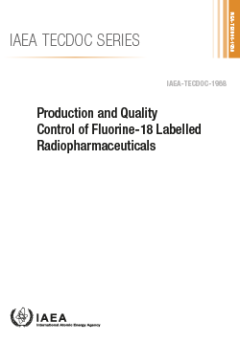
Production and Quality Control of Fluorine-18 Labelled Radiopharmaceuticals -…
Since their clinical use initiation in the 1970’s, Fluorine-18 (F-18) radiopharmaceuticals continue to play an important role in nuclear medicine. It is therefore essential to make available broad information on practical production routes and optimal quality control for F- 18 tracers, to achieve the best possible products in high quantity and quality for clinical applications while fulfillin…
- Edisi
- -
- ISBN/ISSN
- 978-92-0-122721-8
- Deskripsi Fisik
- 166p
- Judul Seri
- -
- No. Panggil
- 615.19 IAE P

Computer Security for Nuclear Security - IAEA Nuclear Security Series No. 42-G
This publication provides detailed guidance on developing, implementing, and integrating computer security as a key component of nuclear security. This guidance applies to computer security aspects of nuclear security and its interfaces with nuclear safety and with other elements of a State’s nuclear security regime, including the security of nuclear material and nuclear facilities, of radioa…
- Edisi
- -
- ISBN/ISSN
- 978-92-0-121120-0
- Deskripsi Fisik
- 102 p
- Judul Seri
- -
- No. Panggil
- -
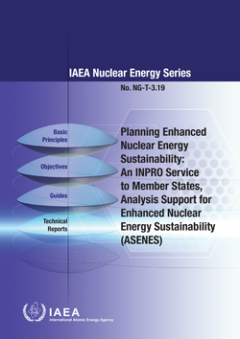
Planning Enhanced Nuclear Energy Sustainability An INPRO Service to Member St…
Energy is a key input for most human activities. It represents an engine for socioeconomic development and is vital for the provision of basic public services such as health care, education, clean water and sanitation. A lack of access to a reliable, affordable and modern energy supply is a major challenge to achieving the Sustainable Development Goals1 (SDGs) [1].
- Edisi
- -
- ISBN/ISSN
- 978-92-0-105121-9
- Deskripsi Fisik
- 51 p
- Judul Seri
- -
- No. Panggil
- 621.48 IAE P
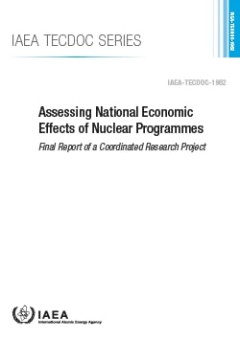
Assessing National Economic Effects of Nuclear Programmes Final Report of a C…
This publication presents the outcomes of an IAEA coordinated research project on assessing the national economic effects of nuclear programmes in participating Member States. It provides a short description of the extended input–output model for sustainable power generation (EMPOWER), developed by the IAEA, and presents concise summaries of its applications. It further includes the results p…
- Edisi
- -
- ISBN/ISSN
- 978-92-0-117321-8
- Deskripsi Fisik
- 144 p
- Judul Seri
- -
- No. Panggil
- 330
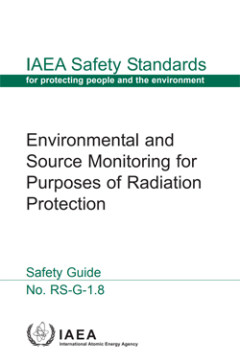
Environmental and Source Monitoring for Purposes of Radiation Protection - IA…
The purpose of this Safety Guide is to provide international guidance, coherent with contemporary radiation protection principles and IAEA safety requirements, on the strategy of monitoring in relation to: (a) control of radionuclide discharges under practice conditions, and (b) intervention, such as in cases of nuclear or radiological emergencies or past contamination of areas with long lived …
- Edisi
- -
- ISBN/ISSN
- 92-0-113404-5
- Deskripsi Fisik
- 119 pages
- Judul Seri
- -
- No. Panggil
- -
 Karya Umum
Karya Umum  Filsafat
Filsafat  Agama
Agama  Ilmu-ilmu Sosial
Ilmu-ilmu Sosial  Bahasa
Bahasa  Ilmu-ilmu Murni
Ilmu-ilmu Murni 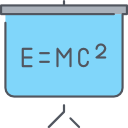 Ilmu-ilmu Terapan
Ilmu-ilmu Terapan  Kesenian, Hiburan, dan Olahraga
Kesenian, Hiburan, dan Olahraga  Kesusastraan
Kesusastraan  Geografi dan Sejarah
Geografi dan Sejarah